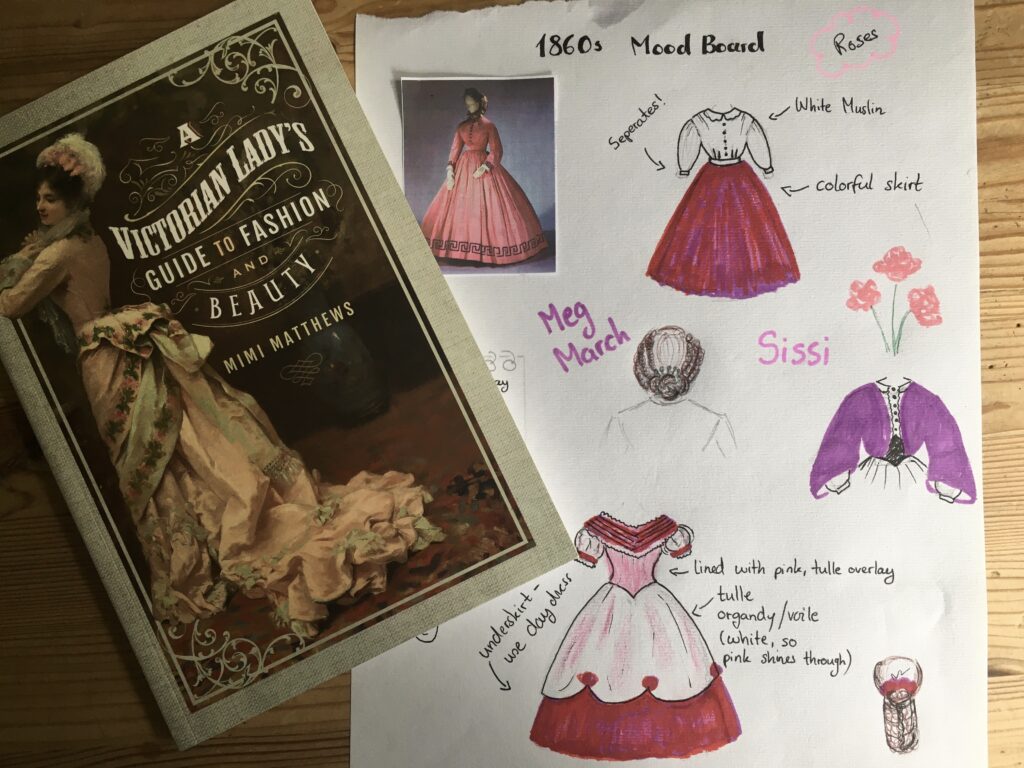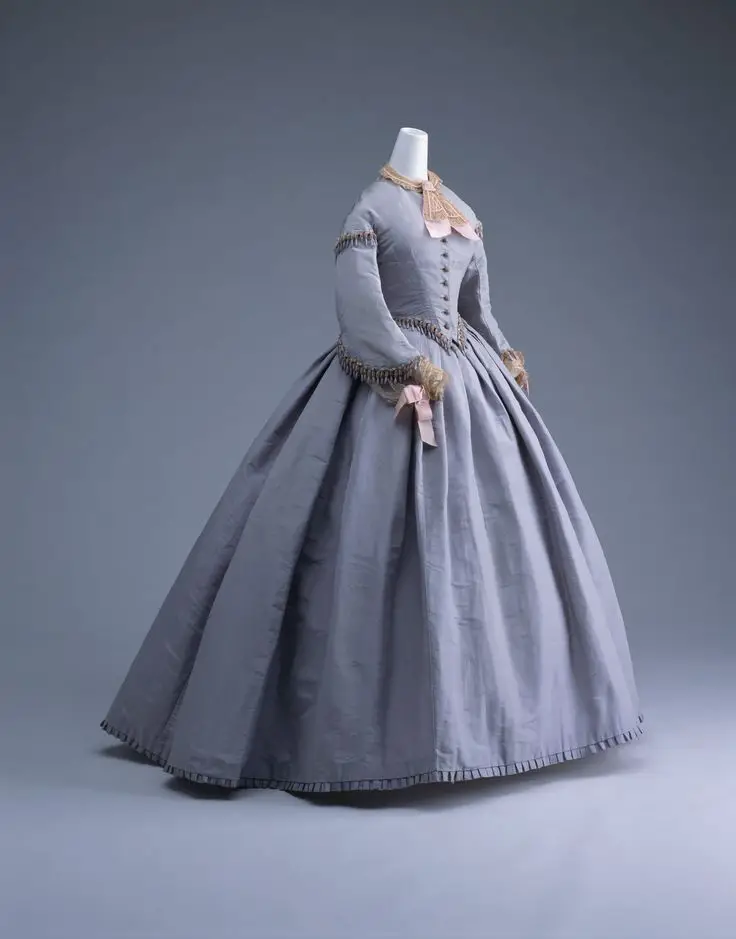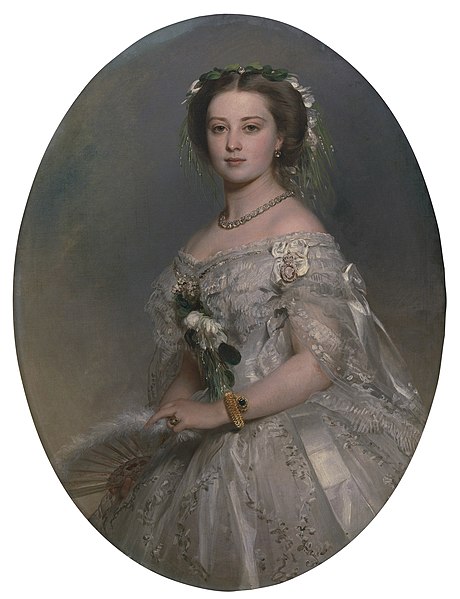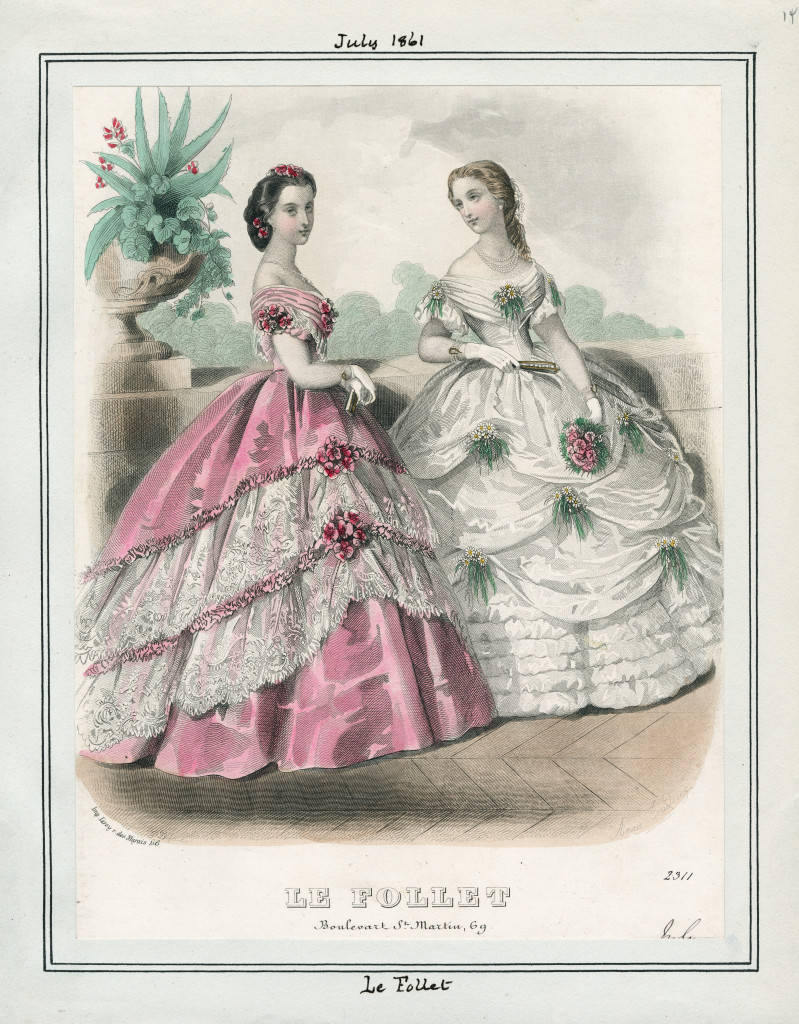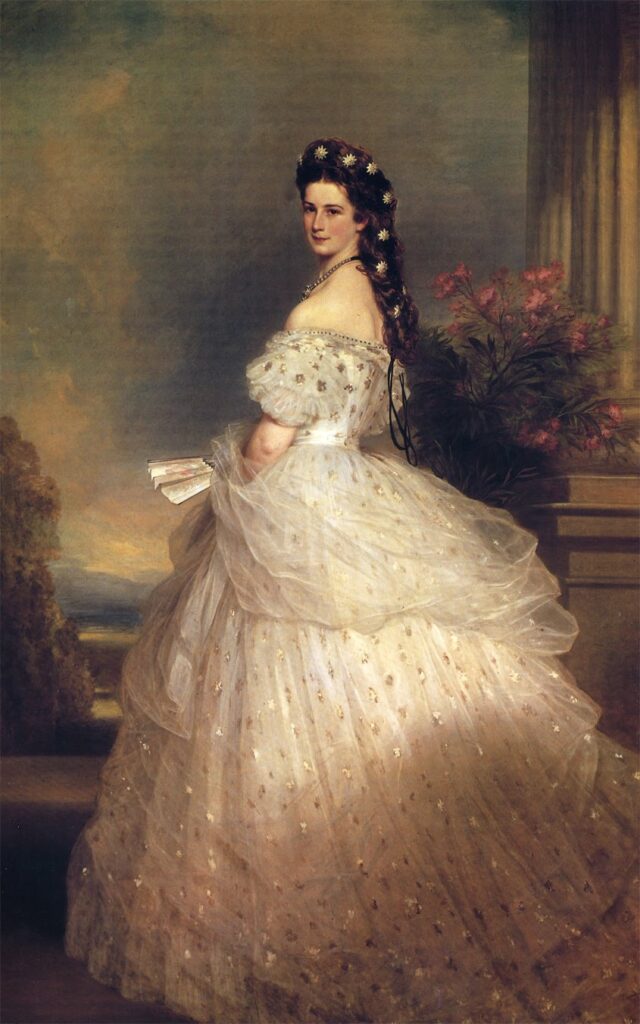As far as the 19th century goes, the 1860s is my favorite decade (together with the 1890s), so when I heard that the next Victorian ball in Bath (hosted by the legendary Izabella Pitcher from Priorattire) would be crinoline-era-themed, I obviously started researching my outfits straight away. I’ve never made anything 1860s yet, so I will need to make something for both daytime and evening wear, hopefully resulting in a fully functional capsule wardrobe.
In the 1860s, the most prominent part of a lady’s dress was her huge skirt, held up by a hoop-skirt or crinoline. Skirts had been growing in size since the 1840s, until the weight of the layers was too much for the wearer to bear without support. With the invention of the crinoline in the 1850s, only one or two petticoats were necessary, and the huge skirts were held out in a bell shape by the hoops. In the 1860s, the popular tiered ruffle skirts of the 50s, though still seen occasionally, began to disappear, with “normal” skirts re-gaining popularity, though often trimmed with braid or ribbon in elaborate designs. In the mid-60s, the skirt was sometimes looped up by ribbons or straps, to reveal a colored petticoat below.
As far as bodices go, for daytime, necklines were high, sometimes worn with a separate lace collar. Shoulders were dropped, and big bishop or pagoda sleeves, wide at the bottom were fashionable. This usually called for wearing either a blouse or false under-sleeves, sometimes made with lace.
For evening wear, the necklines were low and off the shoulder, with short, very elaborate puffed sleeves, lace, tulle and trims. Sometimes bodices were pointed at the front, especially for evening wear, but especially in American civil war era gowns I seem to see many plain waistbands.
Inspiration, Sources
A big part of my research was spent online looking at pictures of gowns and fashion plates, as well as re-reading “Little Women”. A good hint from the latter: “fresh flowers are the most appropriate adornment for a young girl” (like myself). Point taken. Another big help is “The Victorian Lady’s Guide to Fashion and Beauty“, a beautiful book by Minny Mathews on 19th century fashion through the decades. Thanks to the internet, I also had access to a range of issues of the “Godey’s Lady’s Book“, a magazine published from about 1830 all throughout the 19th century.
To minimize cost, i plan on making a skirt that will serve me both day and night, by pairing it with a blouse and jacked by day, and an evening bodice by night. I also want to make a white or pastel tulle overskirt for the evening, that will be looped up over my slightly more colorful underskirt.
As far as evening wear goes, lighter colors are considered to be more becoming to young ladies. We also mustn’t forget that not all colors are “as becoming” by artificial light.
Color wise, I’m thinking a nice pink or lavender will do the job for me, dark enough to be considered “becoming” (I just love that word!) by daylight, and light enough to be pastel when hidden by white tulle. Here are some of my favorite inspiration dresses:
The pink dress on this fashion plate is pretty much my dream victrorian ball gown. I also live the flower details on the skirt and in her hair, and on top, she’s a brunette like me. I may try to make the overskirt a little more similar to the dress on the right, going for a single layer of tulle draped in waves and secured with fabric flowers.
American fashion seems a lot more sensible than European dress at the time, which was mainly caused by the civil war. Goods were limited, and it simply wasn’t good taste to dress extravagantly while husbands and fathers were away fighting.
Altogether I think I prefer the European fashions though, and I may even try to recreate an outfit of the fashion icons of the time, such as Empress Sissi of Austria, Empress Eugene or Princess Pauline of Metternich. On the other hand, though I’m tempted to dress as Sissi in her iconic white and gold tulle dress, I fear other people might have the same idea, and we would end up twinning an iconic look.
Now I need to try and figure out the design of each article of dress I need to make, before starting the actual sewing process. I already own a chemise and corset, but will need to buy or make a crinoline, and another petticoat or two. Since we are on a budget, I will try to make the actual clothing as versatile as possible, so some pieces can be repurposed for other decades.
So, for or a complete 1860s capsule wardrobe we will need:
- Skirt
- Shirt-blouse (white)
- Daytime jacket
- Evening over-skirt
- Evening Bodice
- Hat
- And all the help I can get from fellow costumers, ladies magazines and fashion archives
I will be keeping you posted!


